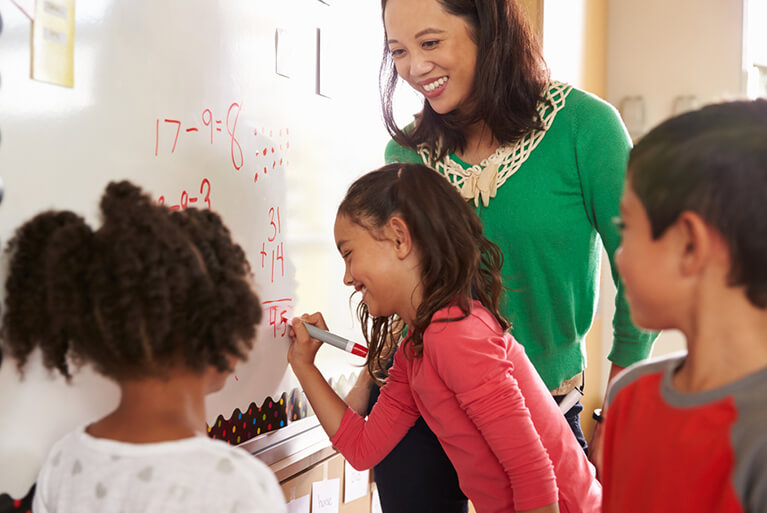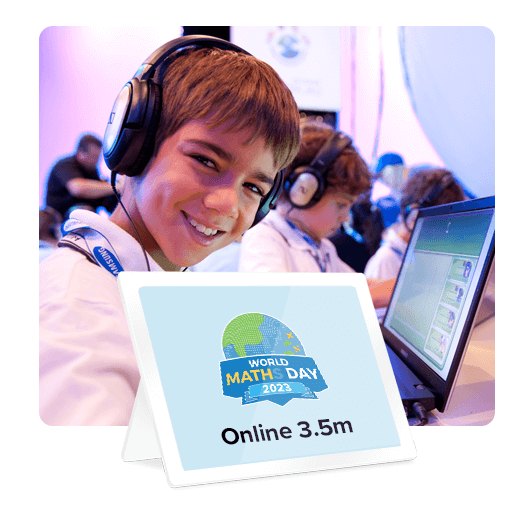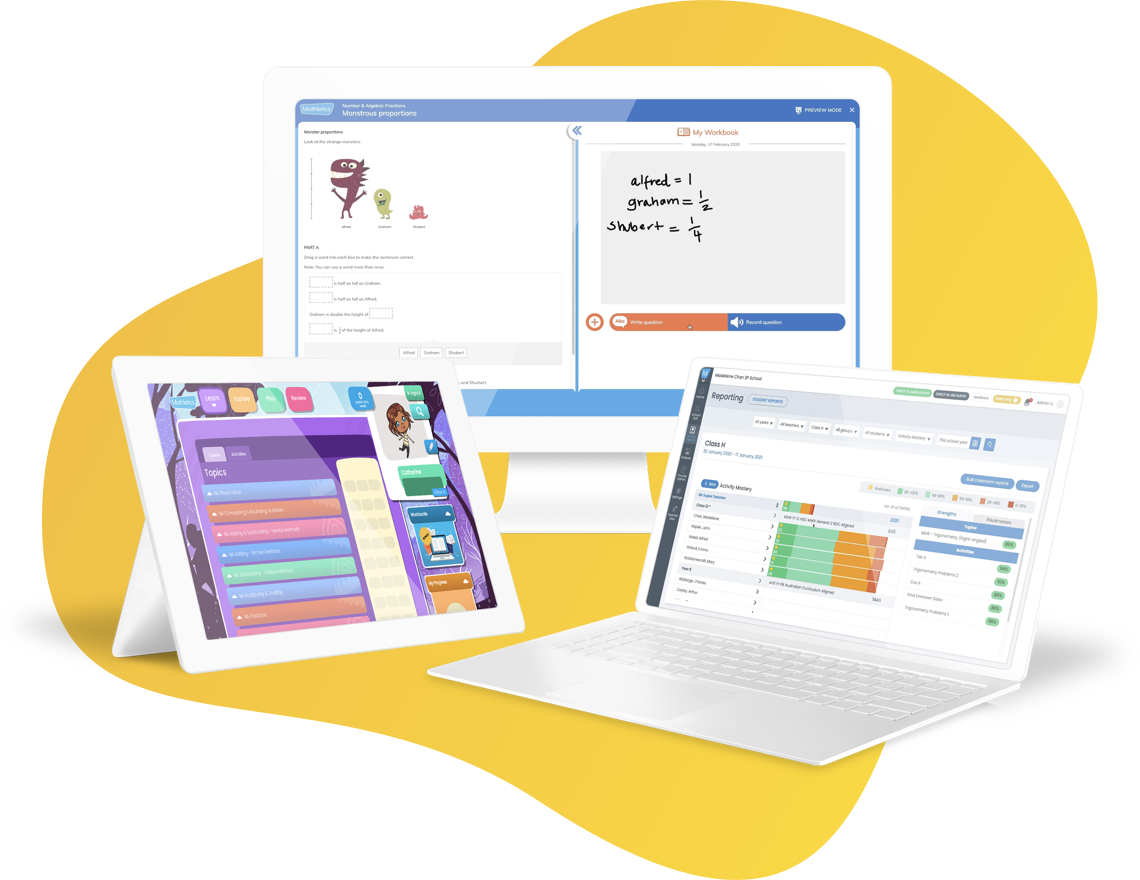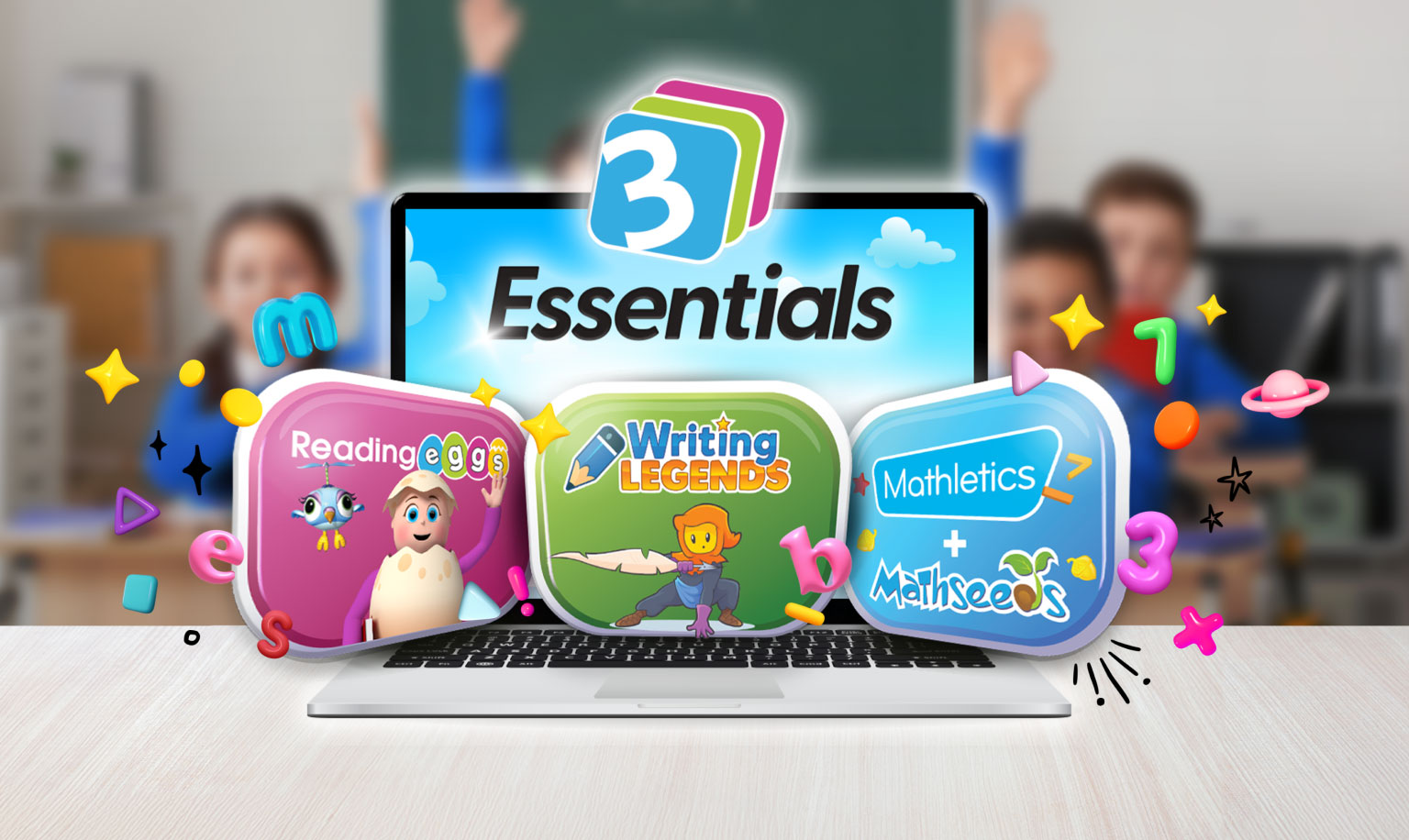
Addition is the first big mathematical step after early learners build basic number sense.
And like all first steps, it can be tough to take (and equally tough to teach).
But it doesn’t have to be. Here’s a 7-step process for teaching addition that creates easier lesson plans for you, and better understanding for your students.
1. Introduce the concept using countable manipulatives
Using countable manipulatives (physical objects) will make addition concrete and much easier to understand. It’s important to use a variety so students begin to understand the concept independent of what’s being counted.
Counting on fingers is the most intuitive place to start before you transition to tokens, bottle caps, or paper cut-outs. If you want to incorporate some movement, put students in small groups and have them join up, counting out the total number of members once more are added.
2. Transition to visuals
Start transferring addition to paper by using illustrated sums, or having students draw objects they can count.
It’s best if you put visuals alongside numbers to promote association between the two. Consider using a graphic organiser with the sum written across the top and a space for drawing under each number.
3. Use a number line
At this stage, most students will still be adding by counting out every number in a sum to reach the total solution.
A number line, however, removes the need to count out the first number in the sum.
If the sum is 4 + 3, for example, students can put their finger on the four to start with, and then count up three places to reach 7. They no longer need to count out the 4 first to reach the solution.
4. Counting Up
Once students know how to use a number line, you’ll want them to use the same “counting up” strategy in their heads.
You can then have them practice this by counting aloud on their fingers. Let’s stick with 4 + 3 as an example:
- Students start with a closed fist and say “4”.
- Students then count up “5, 6, 7”, extending three fingers one at a time.
- Students now have three fingers extended, but remind them that the answer isn’t 3. They started with a 4 in their fist and then counted up, so the answer is 7.
5. Finding the ten
This is a mental mathematics trick that will help students develop their procedural fluency.
Instead of adding two numbers together as they are, encourage students to add them up to 10, and then add the remainder to that 10. For example, the process for 7 + 5 is:
- 7 + 3 = 10
- We still need to add an extra 2, to turn that 3 into 5.
- 10 + 2 = 12
You can use manipulatives to help students learn this skill. Draw two rows of 10 boxes on a sheet of paper, one under the other, and then have students place manipulatives into them to represent the sum.
Then you can show students how it becomes easier if you reposition the manipulatives to fill one row of 10.
Number talks are also a great way to break this strategy down. Model it first, and then ask students to talk through their approach to a question in the same way.
6. Word problems
Word problems encourage students to identify addition problems even when they aren’t clearly specified. Start by introducing them to the language of addition, such as:
- X plus y
- X extra
- X added to
- total amount
- in all
- altogether
Once they’re familiar with the language, get them started with simple problem-solving and reasoning activites.
7. Memorise the facts
Ultimately, we want students to be able to add quickly and accurately in their heads. This procedural fluency is essential as they move onto more complex problems, and there’s no way to get there without memorizing every single digit addition fact.
Here are a few strategies that help:
Break it down
The entire table of addition facts might seem overwhelming, so just focus on specific sections at a time. For example, you might focus on + 1 and + 2 one week, before moving onto pairs that add up to 10.
Gamify the process
Quizzes, group challenges, and rewards will make rote learning more engaging. Just make sure it doesn’t become too competitive and scare off any students who are having difficulty.
Here are 10 simple ways to gamify your classroom.

Take part in World Maths Day, the world’s largest online mathematics competition!
Use EdTech tools
Online learning programs can teach addition in fun, interactive virtual contexts. Better yet, if you choose a fun program students can use independently, they’ll be logging in at home for extra practice.
We’ve put all these things together in our own award-winning programs, Mathseeds and Mathletics. Click on the link below to find out more!











